It will not be difficult for a professional to choose a camera, but sometimes novice photographers have to be easy, because it is necessary to understand a huge amount of information that is not always understood. And the electronics market is updating very quickly, replenishing with interesting novelties and tempting offers. In order to facilitate the choice and help you understand the main technical characteristics, the editors of the site "bestx.htgetrid.com/en/" have prepared for you an overview of the best DSLRs for beginners.
Content
What are the models of cameras?
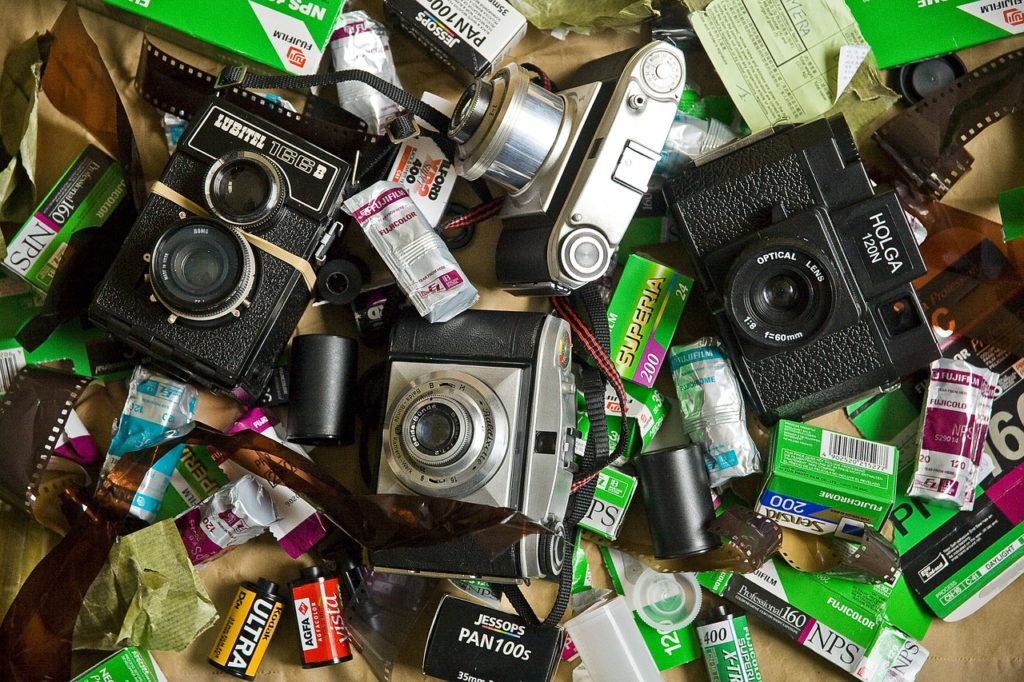
Photographic devices are divided into the following types:
- Compact cameras are well-known to many "soap dishes", superzoom and versatile compact devices. Soap dishes are the simplest and most inexpensive devices that are inferior in performance to all other cameras. They allow you to take a memorable photo for a family album, but most modern smartphones take better pictures. In turn, the difference between superzoom lies in the lenses that allow you to photograph from a long distance. Their cost is higher than that of "soap dishes", but the quality of the photo is also low. Universal compact units belong to the category of professional equipment and allow you to make very good shots. The price for them is quite high, but the quality of the photo is much better. The main drawback is bulkiness and heavy weight;
- SLR cameras - their device is based on a mirror, from which the name of the device comes from. DSLRs are chosen by professional photographers or those who plan to become one. They are good because they have removable lenses, allow you to photograph objects in motion and provide high quality images;
- Mirrorless technology - just like DSLRs, mirrorless cameras have interchangeable lenses and excellent performance. However, the difference between them is significant - the principle of operation and settings for mirrorless cameras is much simpler, and the dimensions are smaller. Mirrorless devices are chosen by those who need a lightweight version of professional equipment on a long trip or business trip;
- Action cameras are devices designed for filming during active (often extreme) actions.
SLR camera - how it works
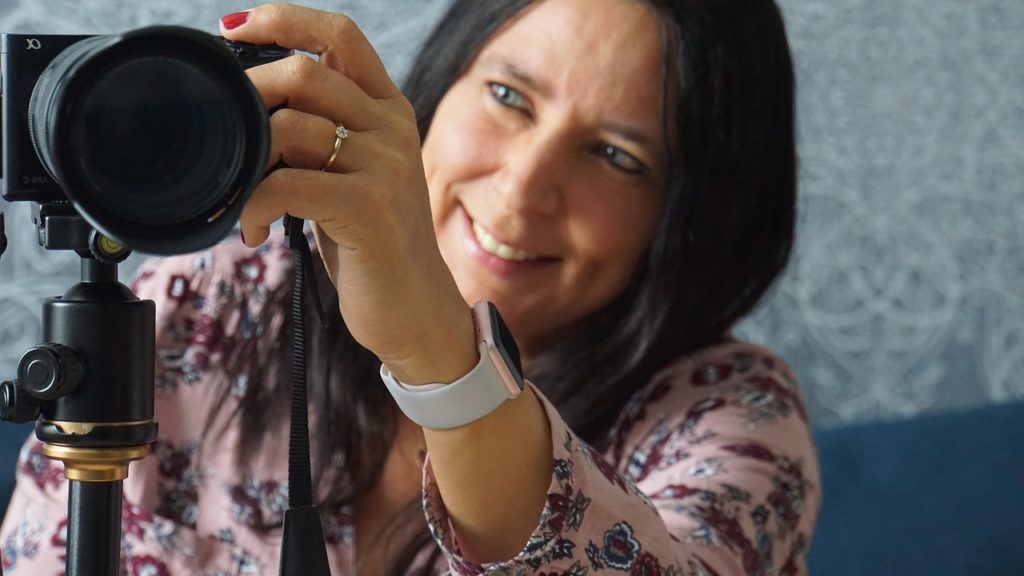
The principle of operation of a reflex camera is that the light passing through the lens of the lens enters a special mirror made of a translucent material. Part of the light penetrates through it and, due to the refractive effect, falls on the photosensitive component of the structure. The task of the latter is to determine if focus is present. Another part of the light is directed into the viewfinder, thanks to which the photographer sees what he is shooting, and therefore has the opportunity to immediately adjust the settings of the device in order to achieve the desired picture.
Once the viewfinder image meets the requirements, all the photographer has to do is press the shutter release button. At this moment, the diaphragm will close and the full amount of light will fall on the matrix. Next comes the processing of information, the result of which is a full-fledged photograph.
To understand which camera is better to buy, you should pay attention to the main selection criteria.
How to choose a DSLR camera?
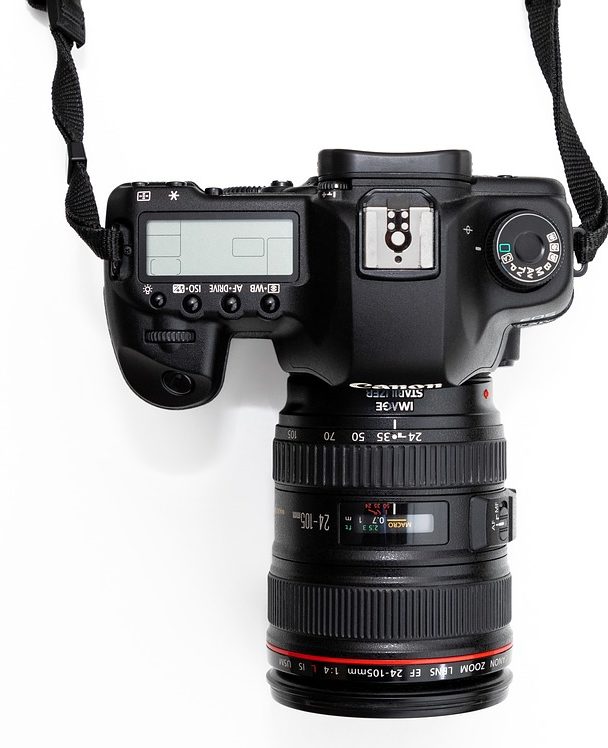
Purpose
Since modern cameras have a huge number of characteristics, when purchasing a camera for personal use, you need to focus on the most basic ones. One of the main parameters is expediency. In this connection, all models on the market can be classified as follows:
- Cameras for novice photographers - as a rule, these are budget devices with little functionality, which are usually divided into two categories: for those who first took such a technique in their hands and for those who are at a more advanced level. The first are the most simplified devices with a minimum of settings and automatic modes. But advanced amateur DSLRs can provide room for creativity and more options. The price for them varies from 20 to 30 thousand rubles;
- Semi-professional cameras are a simplified version of the professional segment, which, in comparison with previous devices, has additional functions and improved ergonomics. They also differ in larger sizes and cost - the price of semi-professional DSLRs is about 50 - 80 thousand rubles;
- Professional equipment - equipped with a high-quality matrix, a huge number of settings, dust and moisture protection, as well as significant resources that contribute to long-term trouble-free operation. The price for a professional camera starts at 100 thousand rubles.
Matrix
The matrix (or sensor) is the part of the device where the future photograph is formed. In fact, this is a circuit consisting of light-sensitive elements.
Matrices have a whole list of characteristics, the most important of which are physical size, resolution, crop factor and format.
The main distinguishing feature of a high-quality DSLR is a large matrix, which is always larger than that of a compact device. However, it should be remembered that an increase in the size of the sensor entails an increase in the cost of the unit, and therefore sensors with a large diagonal are installed only in professional devices.
There are also two types of matrices in SLR cameras - full-frame and cropped.
Full-frame means the presence of a sensor, the size of which is 36x24 mm, that is, it is equivalent to 35 mm photographic film. The full-frame sensor is installed in expensive professional cameras. It contributes to better image detail and full frame coverage. Because the smaller the sensor, the worse the quality of the photos.
Cropped sensors are smaller than full-frame ones. They are also often called "stripped down". They have a size of 22.3x14.9 mm and a narrow field of view. That is, in order to capture what can be captured by a full-frame camera without moving from a place, having a device with a cropped matrix from the subject, you will have to move away almost twice. And the quality of the final image will be lower, but cameras with a cropped matrix are much cheaper.
Matrix resolution
Resolution refers to the number of megapixels, that is, the number of light-sensitive elements with which the sensor is equipped, which affects the size of the final photo. Chasing a large number of pixels is pointless, since this parameter is mostly important for those who regularly print their photos in large format. And for a beginner photographer, resolution is not so important. The main thing is that the number of pixels is harmoniously correlated with the physical size of the matrix. And in most cases 10 MP is enough - the image will look good even on A3 paper.And for printing photos on A4, a sensor with a resolution of 3-4 MP is enough.
The description of the camera, which is given by the manufacturer in the technical documentation for the product, most often contains an indication separately for the number of total megapixels and the number of effective megapixels. Effective megapixels indicate the actual resolution of the sensor, while total megapixels include those used internally.
Matrix type and format
The matrix format is directly related to its physical size, and therefore a sensor of one of the following formats can be installed in an SLR camera:
- APS-C is the most popular sensor format used by almost all manufacturers;
- APS-H - Installed by Canon in their top DSLRs;
- Full frame - a full-frame sensor for professional cameras;
- Medium format - most often found in studio technology.
Types of matrices in mirror devices:
- CMOS - considered the most common. Provide high speed of work, contribute to energy saving, but increase the level of noise;
- LiveMOS is a recent development that is an improved variation of CMOS. The nicest types of sensors, which are much less common than the first.
Light sensitivity
An important component of a good camera is ISO, that is, light sensitivity. It has a maximum and minimum value and can vary from 50 to 26,000 units. And the wider the ISO operating range in which the sensor is capable of delivering images with the least distortion and acceptable noise levels, the better. This increases the capabilities of the device, since photography does not always take place under the same conditions and, for example, in low light conditions, a high light sensitivity is required.
Viewfinder
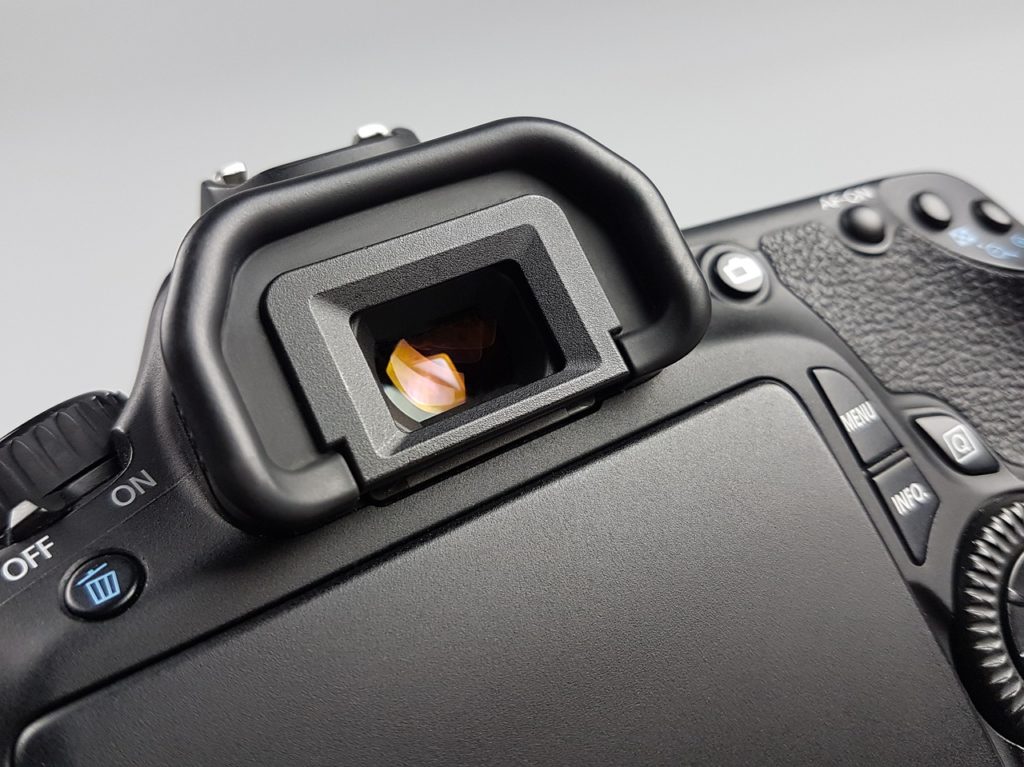
The viewfinder is used to track the subject and identify the boundaries of future photography. Separate viewfinders are used as a rangefinder and are used to control picture quality and to focus, that is, to focus on exactly the subject that is the center of the shooting.
There are 4 types of viewfinder:
- Mirror - provides optimal working conditions, however, due to its complex design, it is installed only in professional and semi-professional DSLRs. Among the advantages - there is no parallax effect, and the setting of shooting parameters is controlled by the photographer;
- Optical - considered the most common. It is a design that combines optical elements that direct the camera to the subject and define the frame. It costs less than a SLR, but has disadvantages - due to the presence of the parallax effect, the photographer is not able to determine how accurately the focus was made;
- Electronic - is a small screen complete with a lens. It consumes a lot of energy, but eliminates parallax, and the photographer sees the image on the screen exactly as the matrix determined it. The main characteristic of an electronic viewfinder is resolution, and the higher it is, the more detailed the picture will be displayed;
- Hybrid - combines the capabilities of an optical and mirror viewfinder.
Also on the market there are models without a viewfinder, and its functions are performed by an LCD screen that displays a picture that goes to the sensor.
Lens

An important characteristic of the lens is the minimum focal length, which makes it clear to what extent this or that lens is able to optically "bring closer" or "remove" the subject of photography. FR determines the angle of view of the camera, and therefore, the shorter the focal length, the greater the angle of view and frame capacity.
Taking into account the FR value, all lenses are conventionally subdivided into ultra-wide-angle, wide-angle, normal, long-focus, ultra-long-focus.
Wide-angle ones have a larger field of view than long-focal ones.
Also, depending on the design, lenses can have a fixed focal length and a variable (optical zoom).
Most of the modern digital camera models are equipped with lenses with variable PA, which expand the capabilities of the device - they allow you to take pictures from a remote distance without physically approaching the subject, change the scale of the frame and compose the frame while standing in one place.
Another important parameter is the f-number (F-number) of a camera lens, which is a measure of the ratio of the focal length to the diameter of the lens and determines how much light will enter the sensor. The lower the F-number, the more light the lens will let through and the higher the quality of the photo will be in low ambient light.
The f-number is maximum and minimum. The minimum is determined by the design of the camera and makes it clear what the lens aperture is. The maximum is set by adjusting the settings with which the diaphragm is equipped.
Exposition
The term "exposure" refers to the amount of light that hits the light sensor per unit of time.
The following parameters are important for exposure:
- Shutter speed is the time interval when the camera shutter is raised to take a picture. The exposure time determines the amount of light flux that will fall on the matrix. It is characterized by the maximum (for the dark time of the day) and minimum (for brightly lit objects) value. And the width of this range determines the capabilities of technology;
- Automatic exposure processing - There are two modes: shutter priority and aperture priority. In the first case, the shutter speed value is set by the photographer, and the aperture value is adjusted automatically, taking into account the illumination of the object. In the second case, the aperture value is selected, and the shutter speed adjusts independently;
- Exposure compensation - used in cases when the exposure automatically calculated by the camera did not meet the requirements and it is necessary to manually correct the obtained parameters. Exposure compensation is characterized by range and minimum step;
- Bracketing is a shooting mode during which frames are taken at different shutter speed and aperture values in relation to each other. As a result, the photographer gets a series of shots taken at different settings. Bracketing is an option in situations where it is not possible to accurately determine the exposure;
- Exposure metering - calculating the amount of light required to obtain a high-quality photo, as well as calculating the required aperture and shutter speed. It is performed by the device before each new frame. There are several metering modes, each designed for specific environmental conditions - spot metering, global metering, multi-zone, center-weighted, and color matrix.
Flash modes
- E-TTL - used in Canon cameras and features a very fast pre-pulse;
- E-TTL II - a modernized version of E-TTL, the operation of which is based on data from light metering sensors and information about the distance at which the subject is located;
- D-TTL - uses matrix exposure metering, so the flash output is calculated based on the maximum balance between the amount of illumination of the background and the subject;
- i-TTL - improved version of D-TTL with all its functions retained, used in Nikon technology;
- P-TTL - designed for Pentax devices;
- ADI-TTL is an algorithm used in devices from Sony and Minolta. Power requirement calculations are based on distance information.
Tips: how to avoid mistakes when choosing?

In order not to waste your money, you should consider the following points:
- Video recording - some models have a video recording function. However, it should be remembered that a camera is not an analog of a camcorder, especially in cases where professional video shooting is required, and not just a video for YouTube.Multifunctionality in a camera is not so important for beginners, the main goal is to learn how to take good photos;
- Manual settings - for those who are just taking their first steps in the art of photography, it is best to purchase a manual camera that allows you to adjust the parameters of aperture, shutter speed, white balance, sensitivity, etc .;
- Bayonet - indicates the type of interchangeable lens mount that can be used with a specific camera model. More often than not, each major manufacturer of photographic equipment develops its own lens standard, compatible only with their technology;
- Sensor cleaning - implies the presence of a special mechanism that removes dust from the sensor, which is especially important for mirror devices. Cleaning is carried out by shaking the matrix slightly with ultrasound;
- Stabilizer - Allows you to smooth out hand shake or shaking while moving when taking photos. Stabilization systems are conventionally divided into two types - with the use of a movable element in the lens and with a sensor shift. The latter option is considered the most effective, as it provides a higher speed of work. It is worth knowing that the stabilizer is not used when shooting at long focal lengths and at slow shutter speeds;
- Display - it can be rotary and touch. Swivel allows you to rotate it around its axis by 90 degrees. There are no buttons in the touchscreen, and the choice of settings is carried out by touching the surface of the screen, which allows you to constructively make it wider.
Advantages and disadvantages
Advantages:
- High image quality;
- Shooting parameters are adjusted depending on external factors and requirements for the photo;
- Interchangeable lenses, of which there are a great many for almost all models and applied photography techniques;
- Availability of manual focus and fast automatic focus;
- Wide range of models.
Disadvantages:
- The high cost of the device itself, plus you will have to pay additionally for the purchase of interchangeable lenses and other elements that may be needed;
- Considerable weight, in connection with which many photographers take SLR cameras for studio shooting, and for events that imply long-term activity, mirrorless devices are chosen;
- The dimensions of the DSLR are not compact, that is, it cannot be placed in a pocket or a regular backpack - for storing and transporting the device, you will need a special case, which must also be purchased separately;
- Complex settings that will take more than one day to master.
Which company is better?

The modern electronics market is very extensive and it is quite difficult to understand the numerous brands. However, there is a list of companies that have been producing photographic equipment for many years. They are deservedly recognized as industry leaders, and their products are in demand all over the world.
The best manufacturers of SLR cameras are:
- Sony is a multinational corporation originally from Japan, the electronics of which is considered one of the most popular;
- Fujifilm - the main activity of the company is the creation of professional and semi-professional photographic equipment;
- Nikon is another Japanese manufacturer and industry pioneer that introduced full-frame sensors to the world;
- Panasonic - produces cameras under the brand name "Lumix", which are famous among photography enthusiasts;
- Canon is an internationally renowned brand capable of boasting a wide variety of camera categories;
- Leica is one of the oldest manufacturers of photographic equipment, many of which have become iconic;
- Sigma is a company that professional photographers are familiar with.
Popular models also produce:
- Olympus (Japan);
- Pentax (Japan);
- Ricoh (Japan);
- Rekam (Canada);
- Samsung (South Korea);
- Hasselblad (Sweden);
- Xiaomi (China).
Main technical characteristics
| room | Specifications | Recommendations |
|---|---|---|
| 1 | Equipment | As a standard, SLR cameras have the body of the device itself and a lens - such a set is called a kit or KIT. The popularity of these models lies in the fact that KIT is suitable for beginners. Another option, called Body, is intended for a more professional level, as it implies an independent selection of lenses. |
| 2 | Lens | The quality characteristics of a lens are determined by its design, that is, by the number of lens groups that make up the optical scheme. A group refers to lenses that are free-standing or glued together. The extent to which the object will be distorted during photography depends on which groups and in what quantity were used in the design of the lens. |
| 3 | Color depth | Allows you to set the maximum number of colors and shades that can be reproduced in a photograph. It is measured in bits per pixel, and the higher the color depth, the better the color rendition of the camera. Modern average digital devices have 24 bit / pic. |
| 4 | "Screwdriver" | Found only in Nikon models, in which the screwdriver refers to the system that rotates the autofocus mechanism of the lens. If a Nikon camera does not have a screwdriver, then a focusing motor must be present in the lens. |
| 5 | Nozzles | The presence of a thread on the lens for attachments expands the functionality of the camera. The most commonly used attachments include the teleconverter, wide-angle converter, and fisheye. There are also lenses for macro photography, light filters, attachments for reshooting slides. |
| 6 | Maintainability | DSLRs belong to the category of complex digital technology, and lenses are optical-mechanical devices. And the repair of such devices should be carried out by professionals with work experience and special knowledge. You should not climb inside yourself. |
| 7 | Weight | A digital camera is a device that you often have to take with you. Therefore, its weight is not of the last importance. Manufacturers do not always indicate the weight of the device, and if they do, they do not give the total weight of the device, but figures without taking into account the weight of the battery. |
| 8 | How much is | At the price of photographic equipment for a beginner, on average, it will cost 35,000 rubles. |
Rating of high-quality models of SLR cameras for 2020
Canon EOS 4000D Kit
Manufacturer: Canon (Japan)
Average price - 20,000 rubles.
Weight - 440g (with battery)

A black plastic SLR with interchangeable lenses, perfect for the beginner photographer. The technique is equipped with good initial optics, a mirror viewfinder (TTL), a built-in flash with red-eye reduction and an 18 MP CMOS sensor. Available automatic and manual white balance, manual shutter speed and aperture, exposure processing in automatic mode, four modes of exposure metering, as well as its bracketing. Phase-type autofocus with illumination, manual focus, and focusing on the face. Photos can be saved in JPEG or RAW mode, and the battery capacity is enough for 500 photos.
Advantages:
- lens included;
- reliable assembly;
- good image quality;
- user-friendly interface;
- there is a timer;
- economical battery consumption;
- there is Wi-Fi;
- the display can be used as a viewfinder;
- shooting in Full-HD mode;
- good color correction;
- the convenience of use;
- field of view 95%;
- light weight.
Disadvantages:
- there is no stabilizer;
- non-rotatable and non-touch screen of small dimensions;
- low speed of continuous shooting (3 frames per second);
- bayonet made of plastic.
Nikon D3500 Kit
Manufacturer: Nikon (Japan)
The average price is 30,000 rubles.
Weight - 370g (without battery)
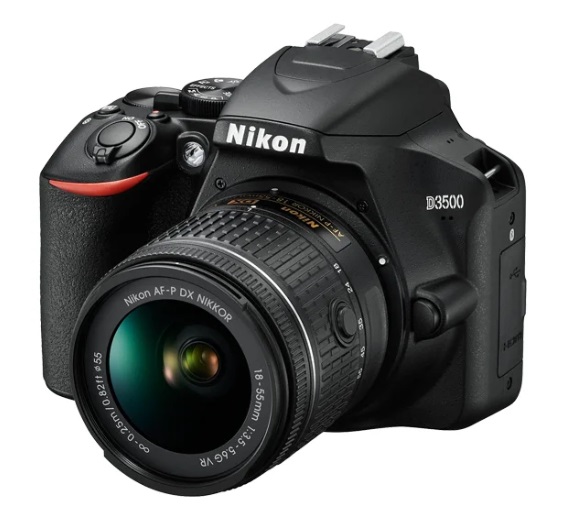
An ergonomic SLR camera that fits very comfortably in the hand and will help beginners learn the art of photography.There is a 24MP CMOS sensor, mirror viewfinder, built-in flash and tripod mount. White balance can be set both automatically and manually so that bright objects in the frame do not turn out to be yellow or gray. Exposure processing is performed with shutter priority and aperture advantage. Exposure metering is available in 4 modes, bracketing can also be used. With burst shooting, photos will be taken at 5 frames per second. The three-inch LCD screen can be used as a viewfinder. The battery capacity is enough for 1550 shots.
Advantages:
- a light weight;
- good stabilization system;
- ease of use;
- clear menu;
- extended ISO range;
- with a timer;
- with an electronic rangefinder;
- field of view 95%;
- Bluetooth;
- you can record video.
Disadvantages:
- not very high quality built-in flash;
- there is no "screwdriver".
Pentax K-70 Kit
Manufacturer: Pentax (Japan)
The average price is 70,000 rubles.
Weight - 630 g (without additional elements)

A reflex camera suitable for the avid traveler, as the robust design can withstand any shock. The camera is equipped with a 24 MP CMOS sensor, a wide ISO range, an image stabilizer based on the principle of sensor shift, a timer and a Time-laps mode. The field of view is 100% and the LCD screen is equipped with swivel mechanisms. The hybrid autofocus has a backlight, manual focus, face focus, and a correction function. Images are saved in JPEG or RAW. The camera allows you to record video with sound. The device can be controlled remotely.
Advantages:
- bright and clear shots;
- Full-HD video shooting;
- protected from moisture, low temperatures and dust;
- good burst speed (6 frames per second);
- economical battery consumption;
- convenient location of buttons;
- with matrix cleaning function;
- equipment.
Disadvantages:
- small battery capacity;
- the apparatus is heavy;
- high price.
Sony Alpha SLT-A58 Kit
Manufacturer: Sony (Japan)
The average price is 28,000 rubles.
Weight - 580g (with battery)
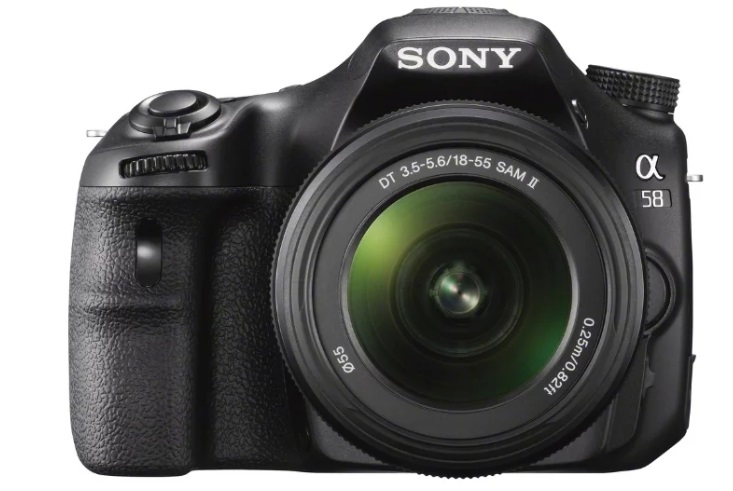
An amateur SLR with a 20 MP CMOS sensor and a color depth of 36 bits. The viewfinder in this unit is electronic with a field of view of 100%. The screen is liquid crystal rotary. Available automatic and manual white balance, manual shutter speed and aperture, two modes of automatic exposure processing and three categories in exposure metering. Phase autofocus with backlight. According to customer reviews, a very good find in this camera is the contouring function, which helps with manual focus. Orientation sensor available. The battery capacity is designed for 690 photos.
Advantages:
- with matrix cleaning function;
- 3D shooting;
- stabilizer;
- high burst shooting speed (8 frames per second);
- with a timer;
- video recording with sound;
- digital zoom;
- excellent built-in flash;
- great resource.
Disadvantages:
- bayonet made of plastic;
- slow recording to external media.
Nikon D3400 Kit
Manufacturer: Nikon (Japan)
The average price is 24,000 rubles.
Weight - 400g (without battery)
![]()
Stylish and easy-to-use 24MP CMOS DSLR camera with built-in flash and 95% field of view DSLR. You can also use the 3-inch LCD as a viewfinder. The hybrid autofocus is illuminated and provides manual focus as well as face-to-face focus. The menu remembers the last changes made and displays them in a separate tab, which is very convenient. The battery capacity is enough for about 800 frames.
Advantages:
- high-quality and detailed picture;
- with a timer;
- with an electronic rangefinder;
- video recording with sound is available;
- remote control;
- with orientation sensor;
- there is Bluetooth;
- good feedback.
Disadvantages:
- no stabilizer;
- simple screen;
- missing screwdriver.
How to set up the device?
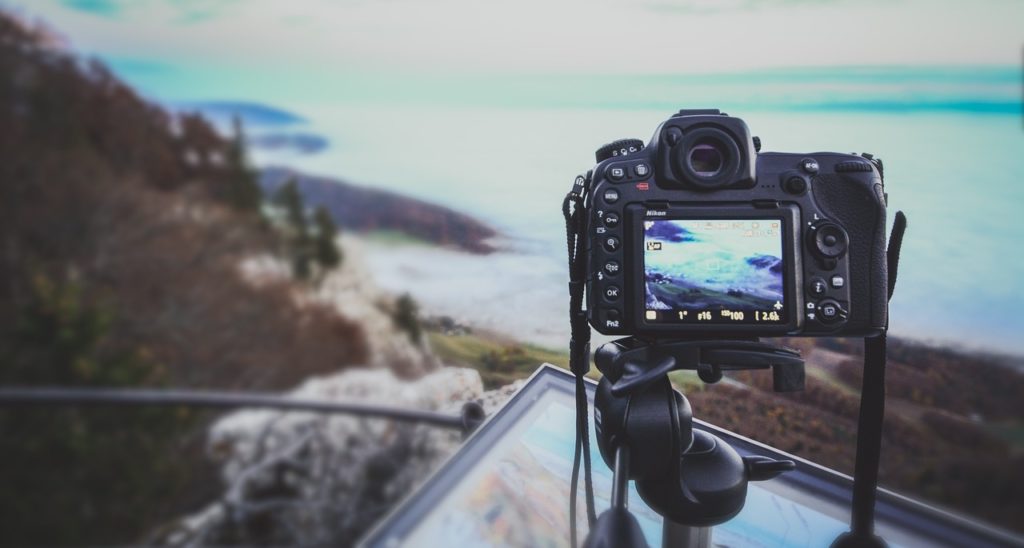
- The first thing to do is adjust the white balance. Most beginners prefer to take photos in automatic mode.However, this function does not always work correctly. For example, it happens that warm sunlight looks cold and expressionless. Therefore, outdoor shooting is best done in Daylight and Sunny modes, which will make the photo more intense. But the Shady and Cloudy options are best chosen in conditions of shade or cloudy weather;
- Next comes the sharpness. Most cameras have maximum and minimum settings. It is best to choose averages as the maximum can lead to too contrasting edges and excessive sharpness. A minimum will lead to the fact that small details become blurred, which will also affect the quality of the picture;
- Now you need to decide on autofocus. Many photographers work in an environment where the camera sets the focus point by itself. However, in this case, it is assumed that the subject is the closest and at the same time in the center of the frame. But if you need to shoot someone who is not in the center, and even with a certain number of background objects around, then the accents will have to be set manually using the "Single point AF" and "Select AF" functions;
- And the last thing that is required of a beginner at first is flash synchronization. By default, the flash fires at the start of the exposure, which is good for fast shutter speeds and when the subject and camera are stationary. However, with slow shutter speeds and a moving subject, this will blur the foreground and sharpen the distant one. In this case, you need to turn on the "Rear Sync" flash synchronization, which will allow you to capture the subject so that it is clear and the background behind it is blurred. And the image will be more natural.
How to clean a DSLR?
The device should be cleaned carefully, as in most lenses the lenses are coated, and the glass is easy to scratch. In this regard, dust should be removed with a special brush or a special "pear". Cleaning products are best purchased from a specialist retailer and taken with you when you are shooting.
In no case should you breathe on the glass and try to wipe it with the edge of your clothing or with a piece of the first rag you come across. There is a great chance to damage the coating and leave streaks and lint on the lens. Do not touch the lenses with your hands, and pieces of dirt should be removed with microfiber.
If you have experience using SLR cameras described in the rating, or a more interesting model, share your opinion in the comments.












